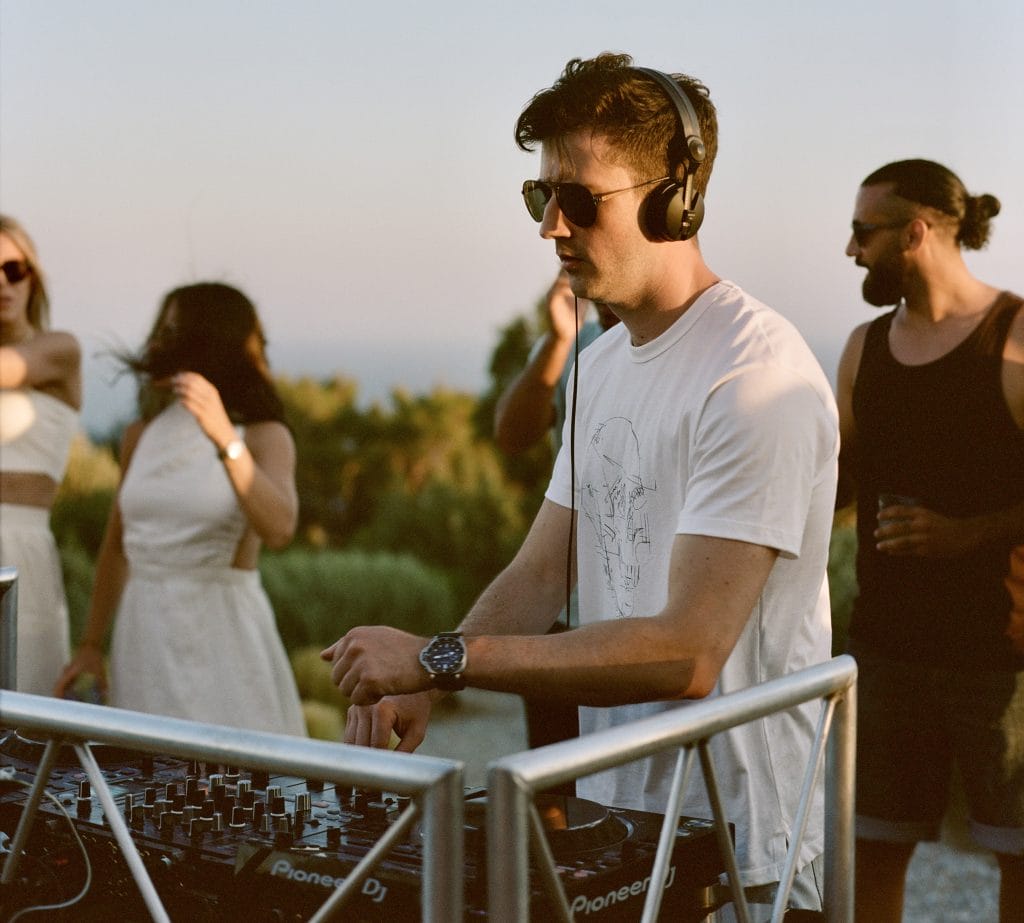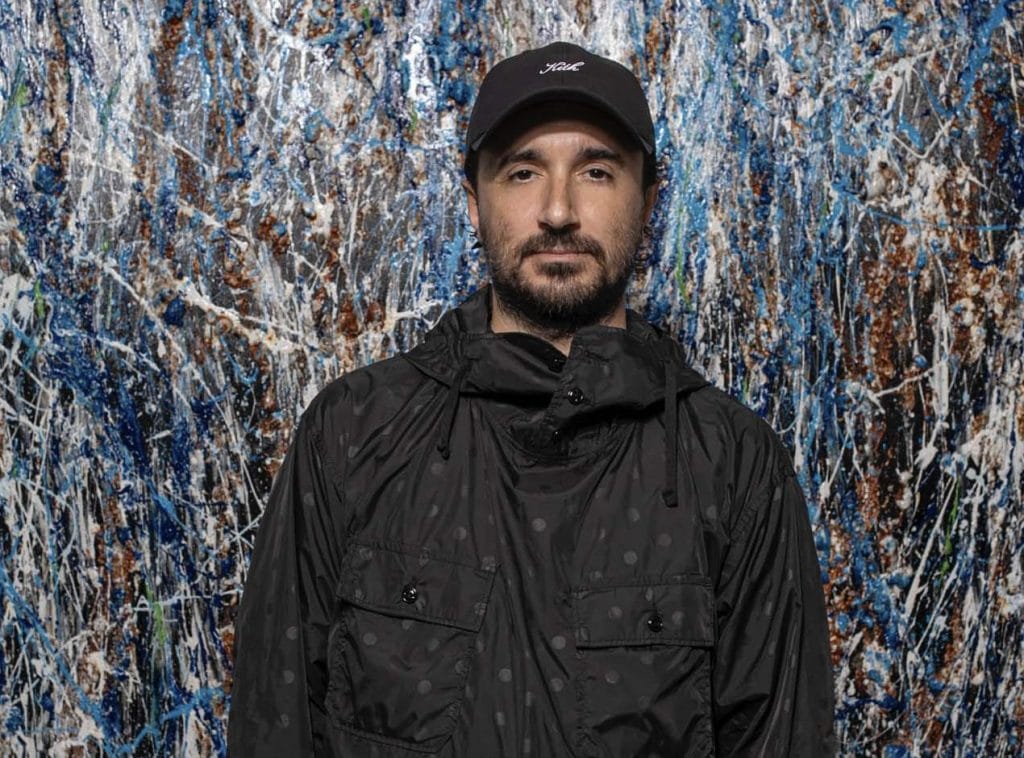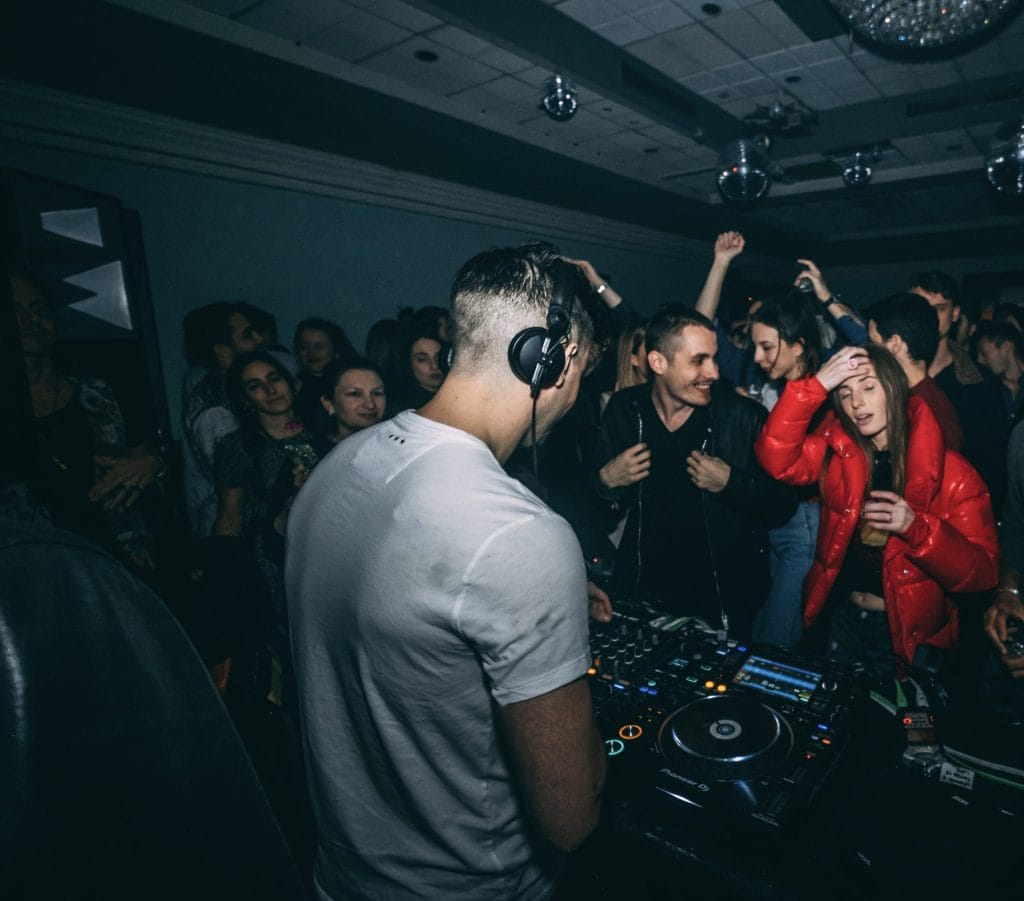Stefan Rose and Sophie Joe’s new collaboration
This Feeling lands July 18 on Frequenza, but we’ve got the premiere ahead of the official release. Built during a day-long studio session in Shoreditch, the track captures the natural chemistry between Stefan’s melodic, club-focused production style and Sophie’s emotionally resonant vocals. The result is a clean, moody track that bridges late-night depth with polished dancefloor precision.
The song emerged after the two met during a gig in East London where they were both playing. That shared musical environment laid the groundwork for the collaboration. Sophie’s vocals were improvised and refined in the studio, while Stefan composed the track around her voice, balancing uplifting synths with a more driving low end. The track has been in regular rotation for both artists since that session, and is now officially seeing the light of day via Nihil Young’s label.
To get a deeper sense of Stefan’s approach, we caught up with him for a conversation about DJing with intention, building emotional progression in a set, and why confidence—not technicality—is what actually makes a crowd respond.
When you step into the booth, what kind of mindset are you trying to bring with you?
Whenever I play, I hope to bring confidence into the booth. I think more than anything, it helps you perform at your best and get a stronger reaction from the crowd. Confidence allows you to think more clearly when selecting tracks, both in terms of navigating your music library but also being sure that those songs are indeed the best choices for that moment in time.
Projecting confidence from the booth also provides comfort to those on the dancefloor observing you, making them more at ease with the direction that you are taking them. This is especially true when they may not actually know who is playing. Energy from a dancefloor can be infectious and encouraging, which in turn can further enhance your performance, setting in motion a powerful self-reinforcing cycle.
This is all much easier said than done, but I do think a confident mindset is important in life and music is no different!
Do you think of your sets as storytelling—or is that something that happens naturally without overthinking it?
Storytelling is exactly how I think about my sets, and frankly it’s how I think about music more broadly. At my gigs this usually happens naturally, as I’m constantly testing various songs to see what works best. Once I find something that resonates, I will usually move my set forward in that general direction.
Even when things on the dancefloor are flowing well, I still like to mix it up and move in ever so slightly different musical styles to keep it intriguing. Rarely do I throw a curveball – I’m a big believer in subtlety and gradual transitions, both for the “micro” when mixing songs together and for the “macro” when arranging a full set – but I also don’t like to park my sets in the same place for too long either. I find that by changing the vibe and mood in subtle ways over the course of an event, you can really keep the crowd engaged and cement a memorable performance.
A melodic song with a strong chord progression, for instance, is going to be more impactful when it’s not sandwiched between two other tracks that also have strong chord progressions. The same goes for songs which have prominent vocals or are more percussive. It’s a very fine balance to keep electronic music consistent while also keeping it interesting.
Have you ever played a set that felt more like a conversation than a performance? What made it feel that way?

I’ve regularly viewed music, and especially electronic music, as a form of communication. I find it to be a powerful medium to convey moods and emotions, sometimes even in ways that words can’t do as effectively.
To me it really is a special kind of language. While people who don’t listen to electronic music may not understand it, for those that do it’s often universal. Fans from South America who speak Spanish can appreciate quality electronic music just as well as Europeans who might speak German.
I know this firsthand from my own experiences playing around the world, but also as a longtime listener with likeminded friends all over the globe. The ability to use music to communicate with other people – even when you may not speak each other’s native language – is such a powerful and enduring feature of the electronic scene.
How do you balance planning ahead with staying present in the moment once you’re actually playing?
I usually have a rough idea in advance of where I want to take a set, at least in terms of the overall vibe, though I rarely plan to play specific songs. That said, I always keep things flexible so I can divert from that path if needed. I’m a big believer in the spontaneity of sets and am continuously reacting to whatever is happening on the dancefloor.
During my gigs, I always keep an eye on people dancing and make mental notes of which tracks and moods seem to be working better than others. There can often be some trial and error here, as there are so many factors that can determine how a crowd responds to what you’re playing.
Details such as where you are in the world, what time of night or day it is, the weather, the size of the venue, whether you’re indoors or outdoors, if it’s a higher-end or more underground establishment, what music the DJ before played, or who is playing after, are all important. Even if you have a decent sense of these factors beforehand, everyone is different and dancefloors can be a bit unpredictable. For all these reasons, I think it’s important for most DJs to be present in the moment and not to overly plan ahead.
Do you ever think about the emotional journey of a set as much as the technical one?
I’d classify most of my music, both in terms of what I play and what I produce, as somewhat emotional. I originally discovered electronic music through Trance, and hence have a longstanding bias towards strong vocals and powerful melodies, even if I now dial those elements back quite a bit.
As I mentioned earlier, DJing to me is about storytelling, and I will often weave in and out of similar yet different subgenres during my sets. Generally, I find that it really helps to warm up a dance floor before going too far into the “emotional” or melodic side of things. This is why I might start a set by playing more repetitive and percussive songs, before gradually introducing tracks that might have prominent chords, bigger breakdowns or memorable melodic hooks. It’s a bit like anything else – people need to warm up before they can properly react, communicate and enjoy on an emotional level.
What does “serving the room” mean to you—and how do you do that without losing yourself in the process?
I spoke earlier about reacting to the dancefloor in real time, and “serving the room” is certainly a big part of that.
I think a talented artist can balance both showcasing their own craft, such as playing their own tracks, while getting people to dance. Ideally, these two things go hand in hand, but for many reasons, including those I touched on before, that’s not always the case. I think for when the crowd may not be reacting well to what you’re “known” for, having some flexibility to take things in a slightly different direction is desirable. If I’m playing one of my own Melodic Techno or Indie Dance productions, and it’s perhaps too powerful or emotional for the room, it might be better to play something that’s a bit more accessible, like Tech House for instance.
That said, this flexibility needs to be within reason, as personally I’m not going to transition from House to Hip Hop or a totally different genre. At the end of the day, if I’m on a lineup it’s because there’s an understanding that it’s an electronic music event, and if it’s not then I shouldn’t be playing there in the first place!
Has there ever been a night where you felt the story you were telling land with the crowd in a real, unforgettable way?
I love the term “flow state” – it’s one that I use frequently and know other DJs who use it too.
This is a feeling when you as the DJ become fully immersed in a set, “one with the booth” so to speak. It’s when everything you’re doing – be it choosing songs, transitions, effects, or interactions with crowd – becomes almost subconscious. Things are flowing in such a way with the dancefloor, with tracks getting the reaction you want them to get, and things building one after another, that it truly becomes something special. I don’t reach a flow state in every set – far from it – but it’s really incredible when it does happen.
I had several sets earlier this year in Thailand and Vietnam that come to mind when thinking about this. It’s one of the main reasons why I love to do what I do.
The post PREMIERE: Stefan Rose & Sophie Joe – This Feeling [Frequenza] appeared first on Magnetic Magazine.






